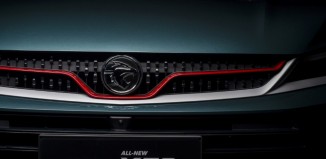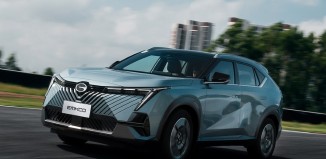Toyota Avanza 1.5S Test Drive Review
What’s This?
 The Toyota Avanza has been around long enough. Launched in the early 2000s, long before the Proton Exora and Perodua Alza saw the light of day, this was the entry-level MPV for the masses. Designed by Daihatsu for Toyota, the Avanza was the spiritual successor to the Toyota Unser / Kijang MPV and had the right ingredients to be popular – 7 seats and 1.3L engine (a 1.5L engine was added later on); the Unser was driven by a 1.8L engine and hence, higher road tax.
The Toyota Avanza has been around long enough. Launched in the early 2000s, long before the Proton Exora and Perodua Alza saw the light of day, this was the entry-level MPV for the masses. Designed by Daihatsu for Toyota, the Avanza was the spiritual successor to the Toyota Unser / Kijang MPV and had the right ingredients to be popular – 7 seats and 1.3L engine (a 1.5L engine was added later on); the Unser was driven by a 1.8L engine and hence, higher road tax.
Following the Unser / Kijang, the Avanza is rear wheel drive with a body-on-frame design like a truck. A generation and a facelift later, this is still pretty much the same formula.
What About It?
 This is the facelift version that went on sale in late-2015. The most notable change is the face which changes the old triangular headlamps to a rectangular one, looking more like its sedan cousins, Vios and Corolla Altis. The 1.5S variant tested is the top-of-the-line which has a thinner upper front grille than the gaping one found in the 1.3E, 1.5E and 1.5G. The rear light cluster too gets a new layout with the housing sporting tiny aerodynamic fins.
This is the facelift version that went on sale in late-2015. The most notable change is the face which changes the old triangular headlamps to a rectangular one, looking more like its sedan cousins, Vios and Corolla Altis. The 1.5S variant tested is the top-of-the-line which has a thinner upper front grille than the gaping one found in the 1.3E, 1.5E and 1.5G. The rear light cluster too gets a new layout with the housing sporting tiny aerodynamic fins.
What’s Inside?
The Avanza has more changes inside despite things still looking pretty much the same. There is a new seat fabric pattern which isn’t immediately noticeable; silver trim on the dashboard, center cluster and steering wheel; relocation of 12V power outlet and meter cluster with drive information.
The 1.5S comes with a new touchscreen DVD-AVN with navigation and reverse camera view. The screen flips up to reveal the DVD slot but getting the screen to flip back down takes some guesswork as to where the button is on the touchscreen. The driver-side window with auto up-down now also includes pinch protection.
The seats are fairly basic, as expected, but comfortable. The driver’s seat doesn’t offer much lateral support but the Avanza isn’t meant to be driven hard around corners like a sports car. The 2nd row seat-back can be adjusted for more lean and has a 50:50 fold. This results in an even split of the middle headrest and something extra for the middle passenger to adjust.
The 3rd row is also split 50:50 and not suitable for adults on long drives. To accommodate longer legs at the back, the 2nd row seat-back has to be more upright which is not as relaxing a position for some. Further, taller occupants at the rearmost seats will be rubbing their hair against the roof lining. However, this concession is to be expected for a compact MPV; it nevertheless still offers versatile seating and storage arrangements. My gripe is that the headrests only have a fully raised or fully lowered position and when fully raised, it limits the rear view. While at it, storage under the center armrest is oddly shaped and doesn’t take in much. However, there is plenty of space on the doors for bottles and such all around.
The back rows are cooled by an additional roof-mounted air blower which essentially sucks cool air from the front and boosts it to cool the rear. Sitting atop the dashboard is a dedicated vent that blows cool air to this blower. However, the vent angle could be less steep because the rear view mirror disrupts part of the air flow; the fans are also a little noisy for my liking.
What’s Underneath?
 The Avanza sports new engines across the range. The new NR series powerplants have dual VVT-i (variable valve timing with intelligence) optimizing valve opening and closing at the intake and exhaust points. Power output for both 1.3L and 1.5L have been improved to 95 hp and 104 hp respectively with torque also increasing to 121 Nm and 136 Nm.
The Avanza sports new engines across the range. The new NR series powerplants have dual VVT-i (variable valve timing with intelligence) optimizing valve opening and closing at the intake and exhaust points. Power output for both 1.3L and 1.5L have been improved to 95 hp and 104 hp respectively with torque also increasing to 121 Nm and 136 Nm.
The engine is mated to a 4-speed automatic transmission and while it seems ancient in a world of 7 and 8-speeders, is fairly robust and smooth-shifting.
 The MPV sits on independent MacPherson suspension in front and 5-link coil spring in the rear and is meant to take heavy loads. Revisions have been done to the suspension set-up to improve stability and ride comfort. Stopping the car the new ventilated front discs; the rear wheels still get drums. This is in addition to ABS and EBD which are new to the Avanza.
The MPV sits on independent MacPherson suspension in front and 5-link coil spring in the rear and is meant to take heavy loads. Revisions have been done to the suspension set-up to improve stability and ride comfort. Stopping the car the new ventilated front discs; the rear wheels still get drums. This is in addition to ABS and EBD which are new to the Avanza.
What’s It Like?
The new engine is definitely more responsive than the old, getting up to speed quite quickly; quicker than I had expected as I had driven the first generation Avanza. The new one also has an Eco Mode indicator on the meter display that lights up when you’re driving frugally; bear in mind that frugal doesn’t have to mean slow.
The gearbox downshifts in a timely manner when you’re intending to overtake on the highway but push the engine to the top end of the rev range and it starts to complain and run out of steam. Low to mid-range revs are fine and seems to be where the Avanza is most comfortable, making it suitable for urban driving.
The advantage of rear wheel drive means a superb turning radius since the front wheels don’t have to pull the car. At 4.7 meters, the turning radius trumps even hatchbacks making it highly maneuverable in tight turns and parking spots. Unfortunately, the ladder frame and high center of gravity won’t allow you to tackle corners like a hatchback. And it’s not meant to.
The steering feel is light and a little disconnected but it suits the users of this vehicle just fine. Ride quality has improved with the revised suspension settings; it’s less bumpy for passengers but don’t expect plush luxury sedan-type of comfort.
Fuel economy over the test drive period was 11 km/liter through mostly heavy urban traffic and some highway dashes. If that level is maintained, the 45-liter fuel tank will take you 495 km.
Who Is It For?
The Avanza is a reliable and low key workhorse. There are other choices such as the Perodua Alza, Proton Exora and Nissan Grand Livina but the Avanza has the durability and after-sales support of Toyota. Service interval is every 10,000 km and the engine runs a timing chain. So if it’s simplicity, reliability and affordability (and 7 seats) you’re after, the Avanza is still an appealing choice.



























































